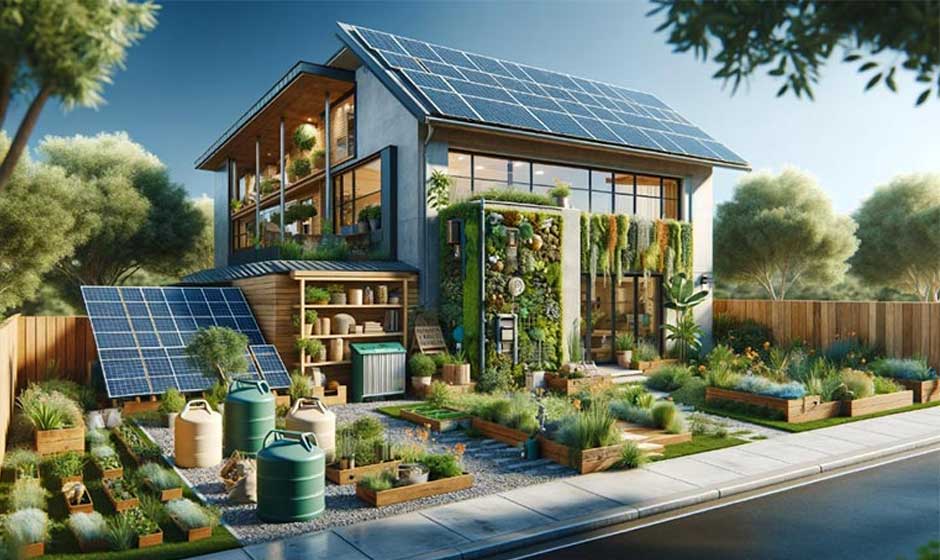Introduction
In recent years, the real estate market has undergone a significant transformation, driven largely by the growing demand for eco-friendly and sustainable homes. What was once a niche preference is quickly becoming a mainstream expectation. Homebuyers, renters, and investors alike are prioritizing environmental responsibility and long-term savings, reshaping how properties are designed, built, and marketed. This shift reflects a deeper awareness of climate change, energy efficiency, and healthier living spaces.
Why Eco-Friendly Homes Are in Demand
Concerns over climate change and resource depletion have increased interest in homes that minimize carbon footprints and use resources responsibly. Buyers are actively seeking spaces that align with their values of conservation. Energy bills remain one of the biggest ongoing expenses for homeowners. Sustainable homes equipped with efficient systems reduce these costs, making them more financially attractive in the long run. Policies and incentives supporting green construction, energy-efficient appliances, and renewable energy integration are making sustainable housing more accessible and appealing. Says Akhil Gupta, Founder, NoBroker
Key Features of Sustainable Homes
Energy Efficiency
From solar panels to double-glazed windows, energy efficiency is a cornerstone of sustainable housing. These features not only reduce reliance on fossil fuels but also lower household expenses.
Water Conservation
Eco-friendly homes often include water-saving appliances, rainwater harvesting systems, and efficient plumbing designs that reduce waste while supporting sustainability.
Sustainable Materials
Builders are increasingly turning to recycled, renewable, or low-impact materials. Options such as bamboo flooring, reclaimed wood, and low-VOC paints reduce environmental harm while enhancing interior comfort.
The Role of Technology in Green Housing
Smart Home Systems
Modern eco-friendly homes integrate smart thermostats, automated lighting, and energy monitoring systems that give residents more control over their consumption.
Renewable Energy Integration
Solar, wind, and geothermal technologies are being incorporated into home design. These not only reduce grid dependency but also increase long-term property value.
Innovative Construction Practices
Tech-driven solutions like modular building and 3D-printed housing are being used to minimize waste and improve energy efficiency during construction.
How Eco-Friendly Homes Impact Property Value
“Sustainable homes are not just good for the environment; they also hold strong financial benefits. Buyers are increasingly willing to pay more for properties that include energy-efficient and environmentally responsible features. In many markets, eco-friendly homes sell faster than traditional properties. Beyond resale value, lower operating costs and reduced maintenance expenses make these homes financially appealing over time”. Says Steve Nicastro, Managing Editor, Cleveroffers
Benefits of Living in a Sustainable Home
Lower Living Costs
Energy-efficient appliances, solar panels, and proper insulation reduce recurring expenses for utilities.
Healthier Indoor Environment
Using non-toxic materials and ensuring proper ventilation contribute to improved air quality and well-being.
Long-Term Comfort
Sustainable homes are designed with durability in mind, reducing the frequency of repairs and replacements.
Challenges Slowing the Adoption of Eco-Friendly Homes
Higher Initial Costs
While long-term savings are significant, upfront construction and renovation costs can deter some buyers and developers.
Limited Awareness
Not all buyers are fully aware of the benefits of eco-friendly housing, making it harder for these properties to compete with traditional homes in certain markets.
Infrastructure Barriers
In some regions, limited access to renewable energy sources or sustainable materials makes eco-friendly construction more challenging.
Sustainable Neighborhoods and Community Living
“Eco-friendly housing is not just about individual homes; entire neighborhoods are now being designed with sustainability in mind. Communities with shared green spaces, car-free zones, renewable-powered utilities, and sustainable waste management systems are on the rise. These developments foster not only environmental responsibility but also a stronger sense of community and healthier lifestyles”. Says Simon Brunke, Founder, Exporo AG
The Future of Eco-Friendly Real Estate
Increasing Buyer Expectations
As sustainable living becomes mainstream, eco-friendly features may shift from “nice to have” to “must-have” in property listings.
Integration of Policy and Regulation
Stricter environmental regulations are expected to push builders and developers toward green practices, making sustainable homes the standard rather than the exception.
Expanding Innovation
New technologies, from smart energy grids to advanced building materials, will continue to shape the way sustainable homes are designed and lived in.
Conclusion
The growing demand for eco-friendly and sustainable homes highlights a turning point in real estate. Buyers, renters, and investors no longer see sustainability as an option but as a necessity. By reducing costs, improving health, and aligning with global environmental goals, these homes deliver value that goes far beyond their physical walls. The future of housing lies in balancing modern comfort with environmental responsibility, and eco-friendly homes are leading the way.








